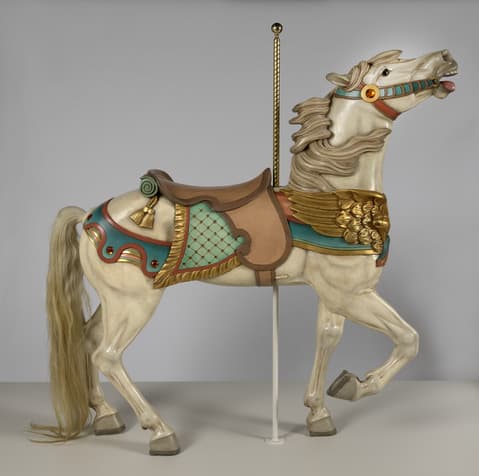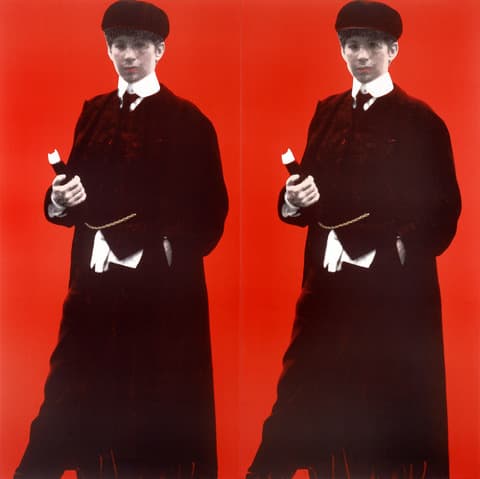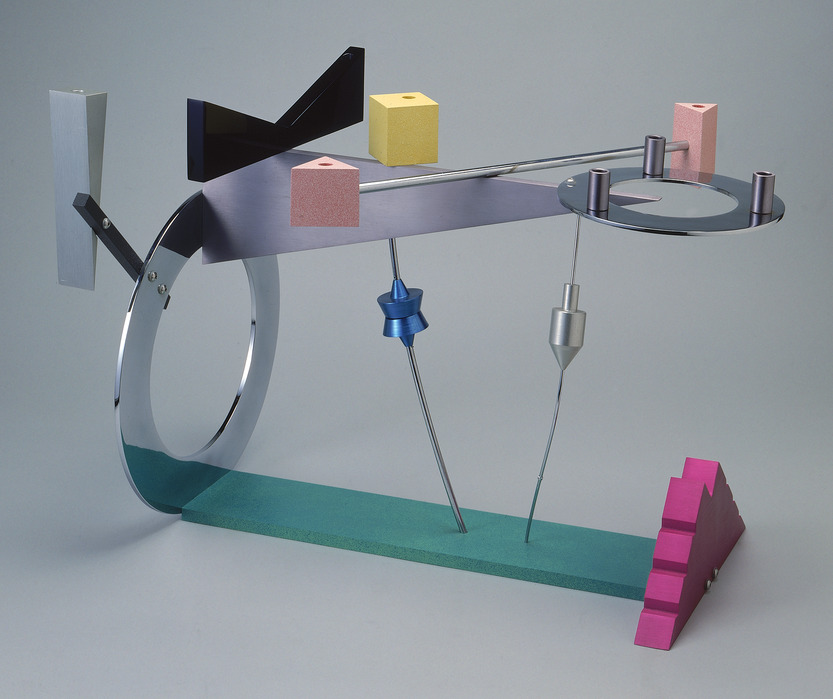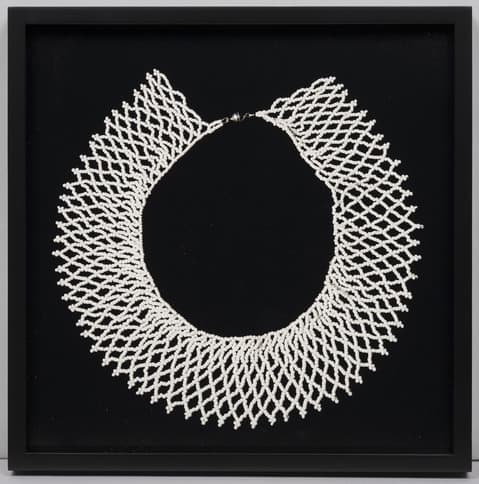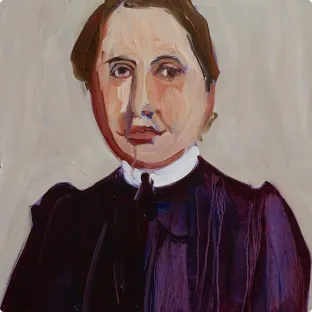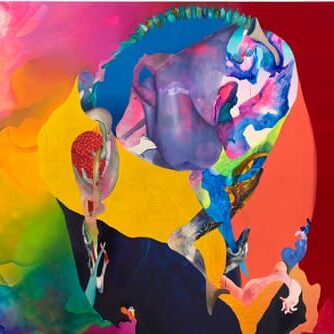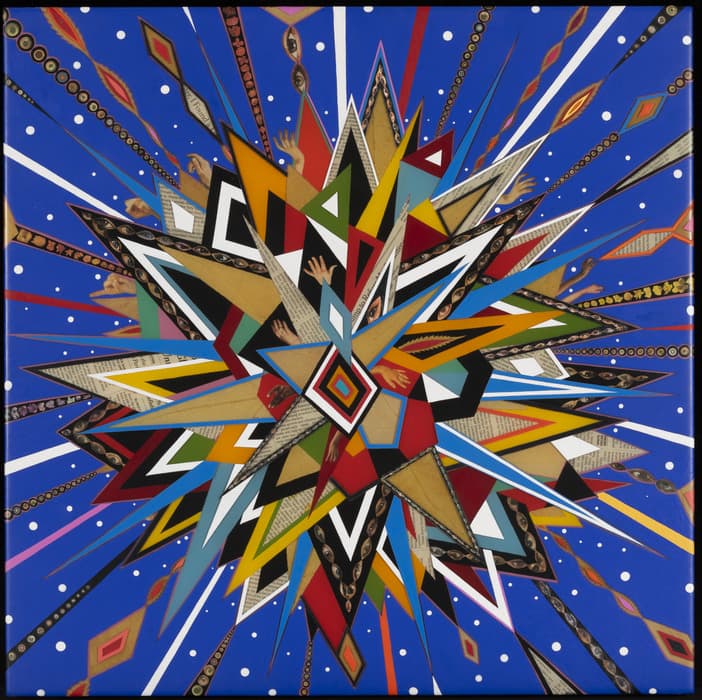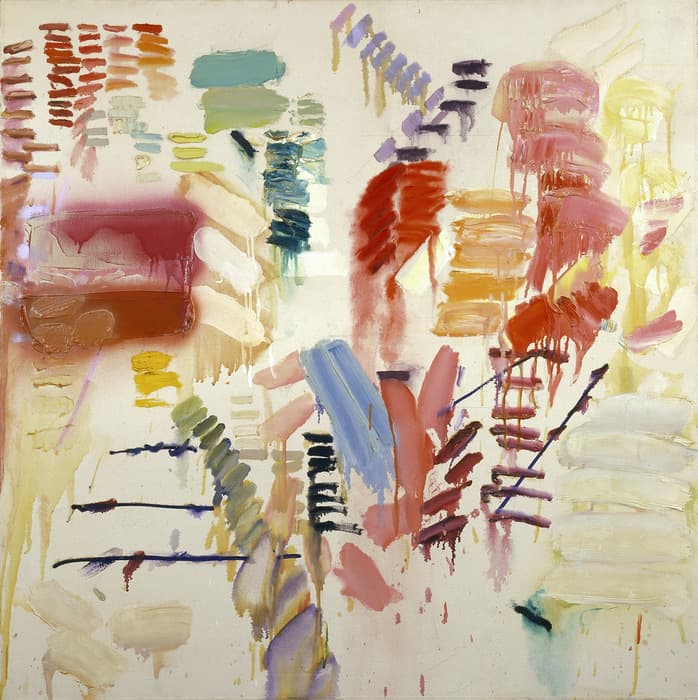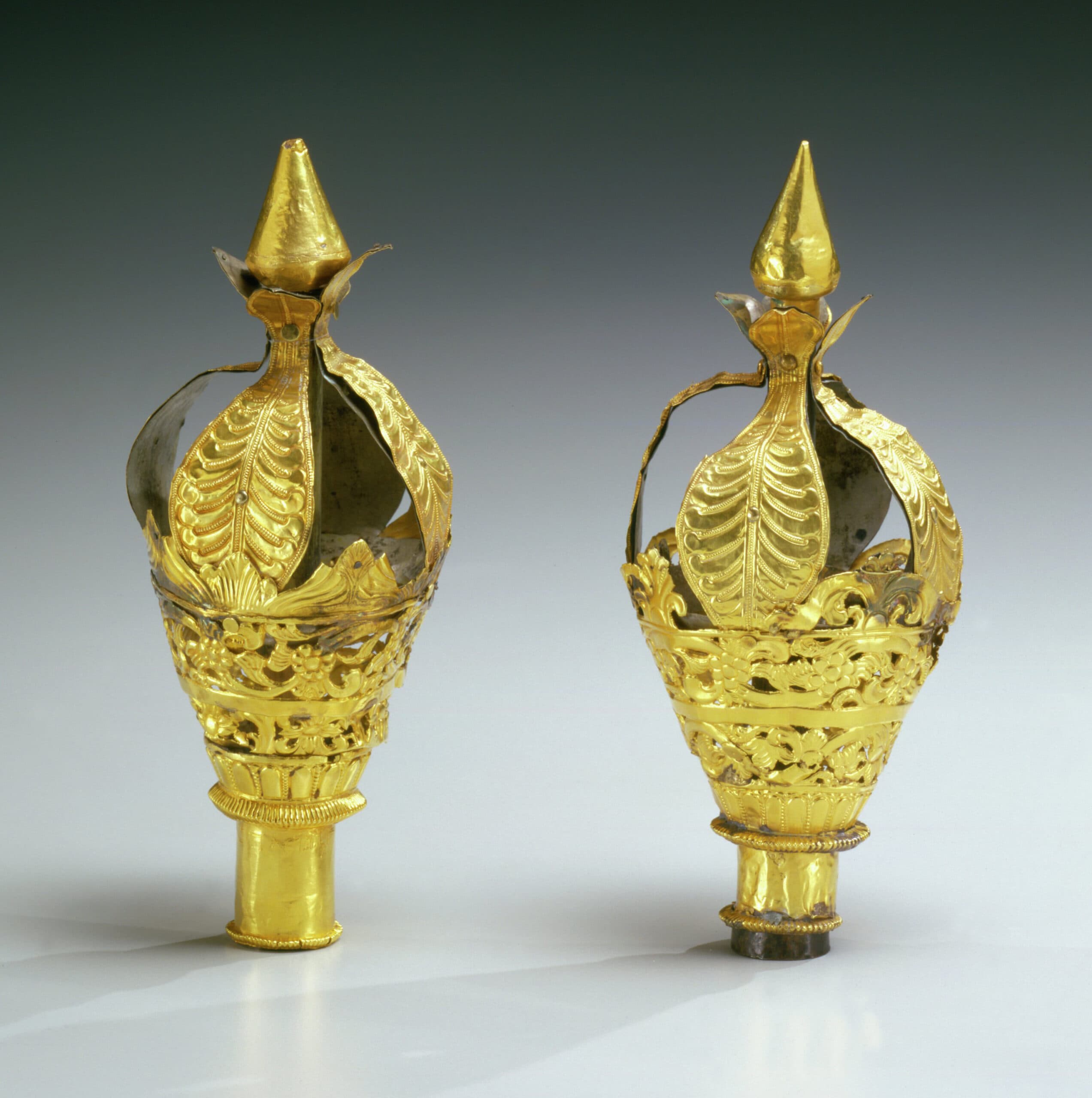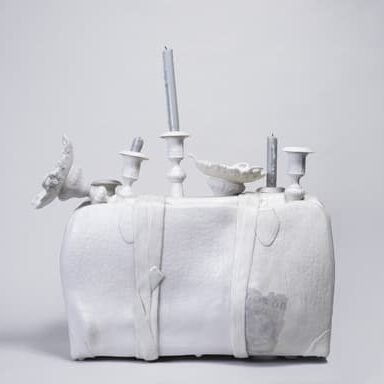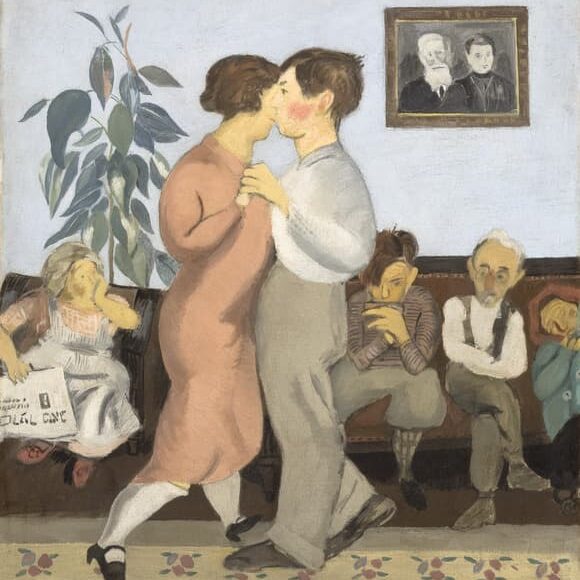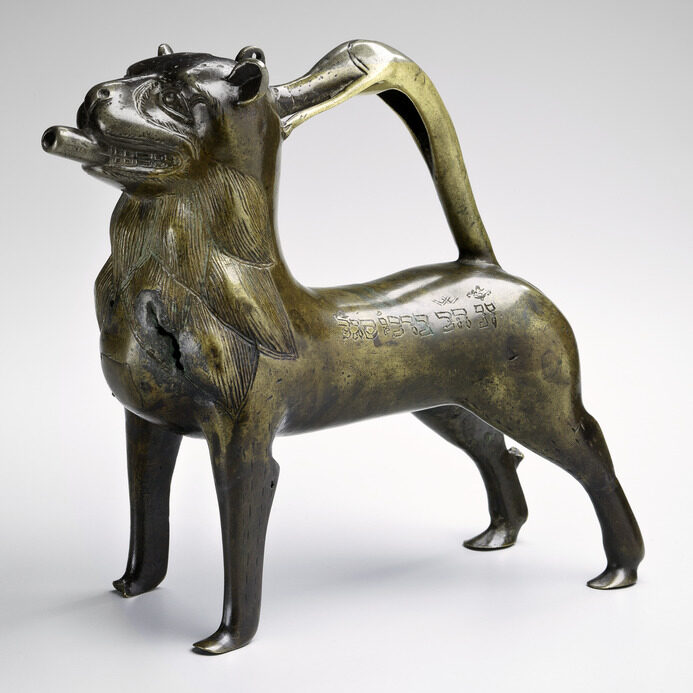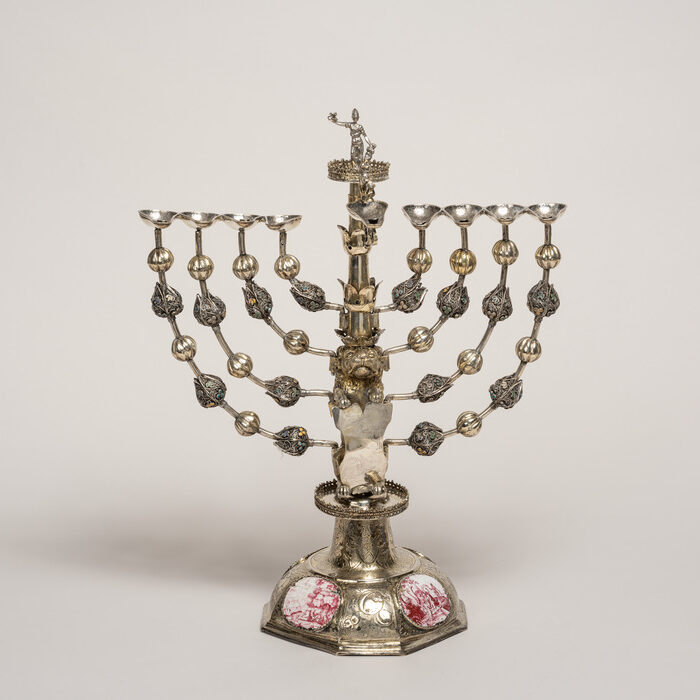Hanging Installation by Beatriz Milhazes Created for the Jewish Museum’s Lobby
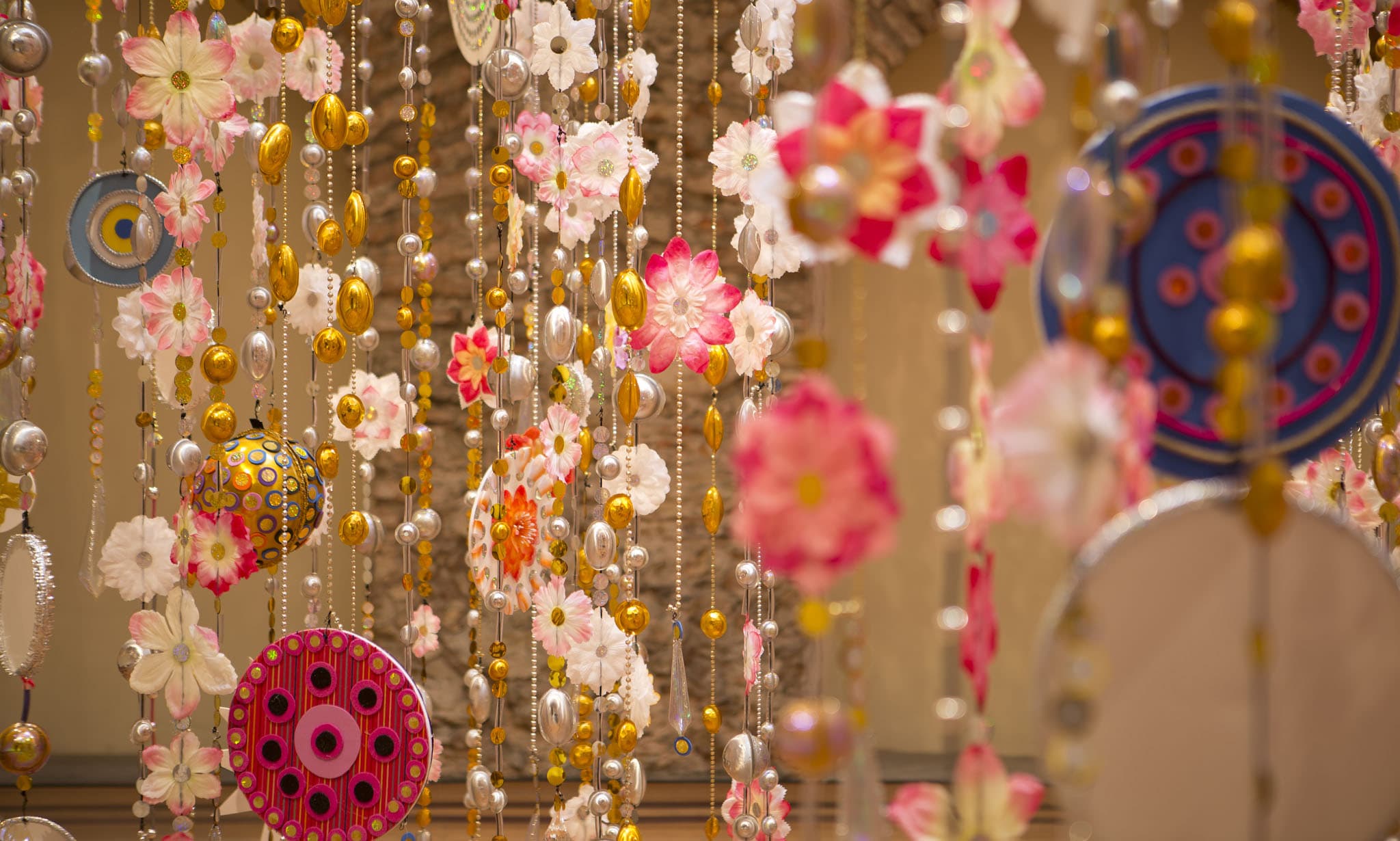
Part of Using Walls, Floors, and Ceilings Lobby Installation Series
New York, NY – A newly created series of five hanging sculptures by Brazilian artist Beatriz Milhazes will be on view in the Jewish Museum’s lobby beginning May 6, creating a vibrant, colorful canopy overhead. Titled Gamboa II (2016), the installation is composed of candy-colored materials including plastic shapes, paper flowers, and other shiny trinkets, and produced with the help of Rio de Janeiro’s famed samba schools—whose craftspeople work year-round creating costumes, dances, and elaborate floats in preparation for Carnival. Milhazes’s work intertwines visual references to Brazilian popular and folk traditions, as well as its modern artistic movements such as Constructivism and Tropicália. Brazilian landscape designer Roberto Burle Marx’s Op art-style pathways for Copacabana Beach and the lush botanical garden near her own studio also influence her approach to line, color, and texture. Gamboa II is on view from May 6 through September 18, 2016 as part of the ongoing series Using Walls, Floors, and Ceilings, which brings newly commissioned contemporary art to the Jewish Museum’s Skirball Lobby.
Gamboa II is inspired by the celebration of Carnival, but also recalls the social and political issues that underpin those festivities. From 1964 to 1985, military dictatorship brought censorship and repression to Brazil, and Carnival parades were a subversive means for the people to slyly express unsanctioned political opinions and to exercise unrestricted creativity. During this period, Brazilian visual and performing artists often used found, ephemeral materials and ad hoc construction in their work. Gamboa II’s composition of shiny, candy-colored paper and plastic recall this history with forms that seem playful, but are rooted in Brazil’s recent political history.
Using Walls, Floors, and Ceilings is a series showcasing new works by international artists in the Skirball Lobby. The series builds on the Museum’s 1970s program called Using Walls, which featured the works of up-and-coming global artists of the time, such as Richard Artschwager, Sol LeWitt, Richard Tuttle, and others. Now, nearly 45 years later, the Museum is revisiting this moment in its history by showcasing new work by emerging artists from all over the world. Since the launch in 2013, the series has featured work by artists including Claire Fontaine, Willem de Rooij, Chantal Joffe, and Valeska Soares.
The Using Walls, Floors, and Ceilings series is organized by Kelly Taxter, Assistant Curator, and Jens Hoffmann, Deputy Director, Exhibitions and Public Programs.
About Beatriz Milhazes
Born in 1960 in Rio de Janeiro, Brazil, Beatriz Milhazes is known for her intensely hued and texturally rich paintings and sculptures. She works in colors at the hottest edges of the spectrum, and composes her canvases with interlocking geometric shapes overlaid with decorative flourishes such as flowers and arabesques. Milhazes represented Brazil at the 2003 Venice Biennale. Selected solo exhibitions include Jardim Botânico, Pérez Art Museum, Miami (2014–15); Meu Bem, Paço Imperiale, Rio (2013); Panamericano, Museo de Arte Latinoamericano, Fundacion Costantini, Buenos Aires (2012); Beatriz Milhazes, Fondation Beyeler, Basel (2011); Beatriz Milhazes, Fondation Cartier, Paris (2009); and Beatriz Milhazes—Pinturas e Colagens, a retrospective at the Estação Pinacoteca, Pinacoteca do Estado, São Paulo (2008). Milhazes lives and works in Rio.
Support
Using Walls, Floors, and Ceilings: Beatriz Milhazes is made possible by the generous support of Wendy Fisher, Alexandra and Guy Halamish, and Toby Devan Lewis.
Press contacts
Molly Kurzius
The Jewish Museum
212.423.3240 or [email protected]
